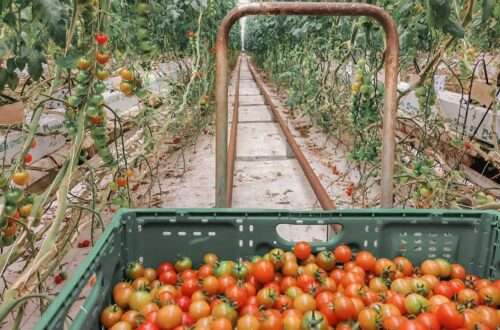
New Zealand Working Holiday Job #11: Lamb Rearing
Working on a sheep farm in New Zealand has been a dream come true.
When I first arrived in New Zealand on my Working Holiday Visa, I intended to explore the country and try out as much agricultural work as possible. Jobs that I may never be able to do in Singapore or anywhere else in the world (where else can you get a visa that easily to travel, earn and learn as you go).
I wanted to understand how the primary industry function. How does the food I have in front of me come out to be?
Lambing and calving are nice to-haves, but they are not easy to source.
Farmers in New Zealand choose to hire those with experience. They want someone who has handled big animals. They want testimonies.
And I have covid to thank for this opportunity.
If not for the lack of workers entering New Zealand during the pandemic, and the reluctance of young locals working on farms, I might never have had the chance to try out animal husbandry.
I happened to work as a calf rearer due to a good testimony from previous employment as an apple grader/ packer.
An attentive and hardworking attitude pays off.
My good testimony as a calf rearer helped me secure another role as a lamb rearer.

I did this job from Jul – Sep 2021. Post may be updated periodically.
The Sheep Dairying Industry
From what I have heard and read about this industry in New Zealand, I learnt that sheep reared are categorised into sheep for meat, wool or milk.
Sheep for wool—mostly Merinos—are usually reared in the mountainous areas of the South Island.
Farmers rear sheep for meat and dairy on flat grassy plains, but the lambs in dairy farms segregate from ewes within the first 72 hours.
Rams in the dairy farms are culled for meat, as it is in calving. Their wool may be harvested to make products that do not need fine wool, like carpets or stuffings. There are many different species of sheep, and lambs born for dairy just do not grow that nice, soft wool we know of Merino.
Sheep dairying is a growing industry. It is not as developed as the matured dairying industry as the milk products we have grown to be familiar with are made from bovine milk. Time, investments and awareness are needed before sheep dairy could compete against this traditional dairy – the latter remains NZ’s top export earner and a profitable and popular farming choice.
But sheep dairying is growing, and research has shown the benefit of sheep milk against cow milk. Protein and fats in sheep milk are more readily digestible – a marketing bonus for Asian markets where sensitivity to cow milk is common.



Working in a Sheep Dairy Farm as a Lamb Rearer
Working with farm animals requires long, hard days of physical labour.
Animals need to eat, and for those that are lactating, you would have to diligently follow a milking schedule to make sure all the animals are milked and comfortable throughout the day. That means combing through hundreds or thousands of them at least twice a day, on top of attending to other chores around the farm. A milker may start his day as early as 4.30 am.
As a lamb rearer, I am spared from milking.
But that does not make my work any easier as baby animals require more attention than adults. My shift could start as early as 6 am and end as late as 8—or even 9—pm.
Before we go through the usual routine of a lamb rearer, we first have to understand the different milestones a lamb born on a dairy farm has to go through.
From Birth to Weaning



Pregnancy
Ewes are pregnant for five months and would usually give birth to lambs around the same time as calves between August to October—the end of winter to the start of spring—in New Zealand.
As the expected birth date draws closer, the ewes are kept indoors and provided with fresh bedding.
Those in labour are isolated into pens and provided fresh water and nourishment.
Birth and the First 72 Hours
Birth is long and messy.
The ewe may take half a day to birth twins, triplets or quadruplets.
She will spend the day cleaning her newborns and resting.
Her lambs are by her side for the first 72 hours of their life to receive her colostrum—first milk—for nourishment and its immunity-boosting properties.
New Pens, Home for the Next 72 Hours
Lambs weighing above three kg are moved to pens, and the ewes are sent for milking.
Lambs born on the same day assemble in the same pen and are taught to drink colostrum from feeders.


Bigger Pens, Automated Feeders
The lambs now know how to drink from feeders.
They are moved to bigger pens fitted with automated milk machines and can drink whenever they want.
Automated feeders are fed milk replacer powder and water and can churn out warm milk anytime without too much human intervention.
Hay, meal, probiotics and vitamin supplements are introduced to their diet.
The lambs receive a couple of vaccinations against diseases as they mature.
As they grow stronger, their pens grow in size as well. Lambs are released to roam outdoors in paddocks and may get used to chewing grass.
Weaning
The lambs are gradually weaned off milk.
Their diet now consists of hay, barley, fresh grass and meal.
Lambs may weigh 20 kg by their first month.
Once ram lambs are above a certain weight, they are sent for culling.
Ewe lambs may be moved to other farms with bigger paddocks. They may be prepared for conception and pregnancy in the following year.

Daily Work on the Farm
Morning
Depending on the shift, working at 6 am entails making sure all the lambs on the farm are well-fed.
We would have to go through all lambs brought in from the ewes yesterday to ensure they know how to feed and are not starving. Some lambs forget and need more help.
The backbreaking process of teaching the fidgety lambs is not for everyone. Prepare to crouch, kneel or sit at the same height as the lamb you are serving and maintain that position for a couple of minutes. The teacher needs to be gentle and relaxed. Coercion would not work and may hurt the hungry lamb. Repeat the process by the number of hungry lambs in the pen, usually at least 20. Do the same for the rest of the new pens.
By the time the new lambs are fed, it could well be afternoon—time for lunch.
Afternoon
Afternoons are normally less physically painful but no less busy.
Some rearers would do housekeeping, such as: keeping pens clean, adding new clean beddings onto soiled ones, cleaning water bowls, soaping the feeders, going through all pens to check for ill lambs, administering medications for sick lambs, replenishing their hay, meals and supplements.
Other rearers may check on the new lambs to be moved that day. They would have to weigh the lambs—they have to be above 3 kg each—apply iodine ointment to their navels, feed them drench, and transport them as gently and calmly as they could to their new pens.
Newly transported lambs are usually full from suckling their moms’ milk and may be taught to drink from teats later in the evening or the next day, depending on their hunger. At this point, the lambs are stressed and will not react well to drinking from teats.
Evening
The evenings are like the mornings but considerably less demanding.
Lamb rearers focus on teaching the new lambs to drink from teats.
Those working on the later shift end work when all lambs are fed and happy.


Ending
And that is the end of my recount as a lamb rearer in New Zealand.
If you are interested in experiencing life in animal husbandry in New Zealand, you could apply to several farms through the backpackers’ board or local job board. Make sure you have a few solid testimonies to back up your portfolio and character.
Working with animals will be demanding.
If a long stint does not sound appealing, consider applying to work for some farmers as a free helper for a few days, or join Wwoofing or HelpX.
Video







